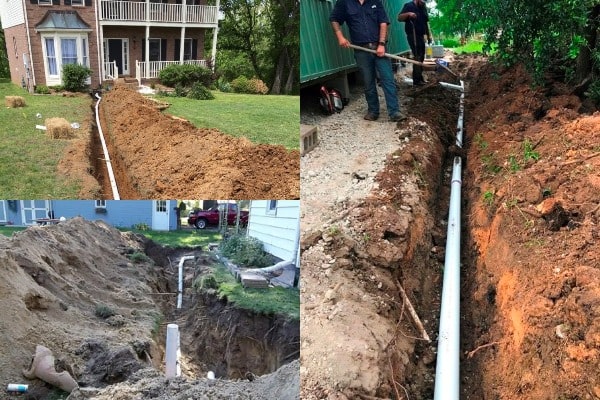When it comes to plumbing, most people don’t think much about whatever they can’t see. The truth is, your sewer lines and pipes take a lot on a daily basis, but despite this, you probably rarely pay attention to them until there is a problem and you need to call a plumber.
Before stepping ahead, we would like to suggest you visit this site if you are looking for different kinds of construction-related services such as Vacuum Excavation, Suction Excavation, Borehole Drilling, or Environmental Drilling, every service is just a click away.
When it comes to Sewer Line Replacement from United Plumbing, fortunately, you know who to call. What follows is a brief explanation of what is involved in sewer line replacement.

Inspection and Diagnosis
There are many things that can damage sewer lines. These can include natural causes such as tree roots. They can also because by clogs from incorrect practices such as flushing paper towels and other foreign objects. Sewer lines can also break down due to age or corrosion. Regardless of the cause, however, sewer line problems can be a huge challenge.
The first step in repairing a sewer line is to call a professional Sewer line repair is not something a homeowner can do themselves. A professional, on the other hand, will use a video camera to inspect the line to determine where and what the problem is.
Types of Sewer Line Problems
In most cases, sewer line problems will include the following issues:
- Cracked or broken pipes. Geologic activity such as shifting soil and settling can cause pipes to crack or collapse.
- Blockage. Blockages caused by foreign objects such as paper towels, grease build-up, and others can cause damage by impeding the normal flow of sewage.
- Corroded pipes. With time, pipes can corrode and collapse leading to a restricted flow.
- Leaks. Leaks can result from broken seals between pipe joints causing waste to leak from pipes.
Repairing a Sewer Line Problem
After a plumber has identified the type of damage in your sewer line, they will determine what kind of repair is needed. Sometimes, simple cabling is enough, but in other cases replacement of the sewer line is required. There are also other options:
Hydro Jetting
Closely related to cabling is hydro jetting, which is pressure jetting it. Pressure jetting is highly effective at removing stubborn obstructions.
Relining
Relining a pipe is another method of repairing a sewer line. Relining is basically creating a new pipe within an old pipe.
Trenching
In most cases, sewer lines are located under concrete floors and slabs. When there is a problem, this requires that a plumber excavate to access the problem and replace it. After the repair is completed, the trench is backfilled.
Trenchless
Thanks to advances in plumbing technology, it is now possible to repair a pipe without a lot of invasive digging. Trenchless repair is accomplished by first finding the shallowest point, most often in a basement or other place outside the home. The pipe is then flushed and completely cleared out. New pipes are inserted into the line and pulled along the path of the previous pipe.
The new pipe is made from resin which is allowed to harden after a while and replaces the damaged line. Once it is complete, it is inspected to make sure it is leak-free.
Replacing a sewer line can be a difficult job, but with a good plumber doing the work, there is little reason for concern. A good plumber has both the equipment and the expertise to do the job right the first time.